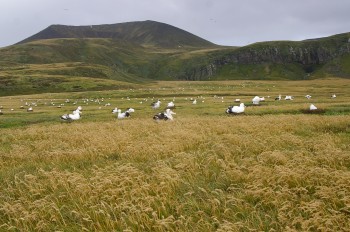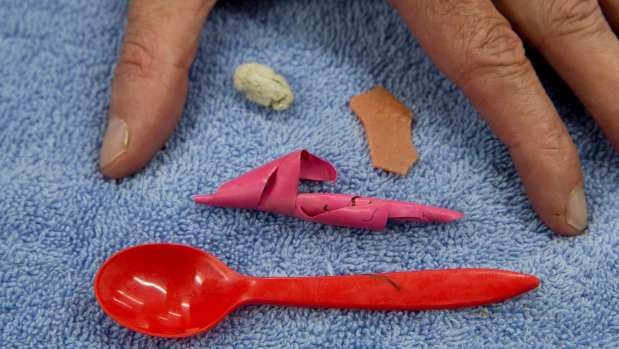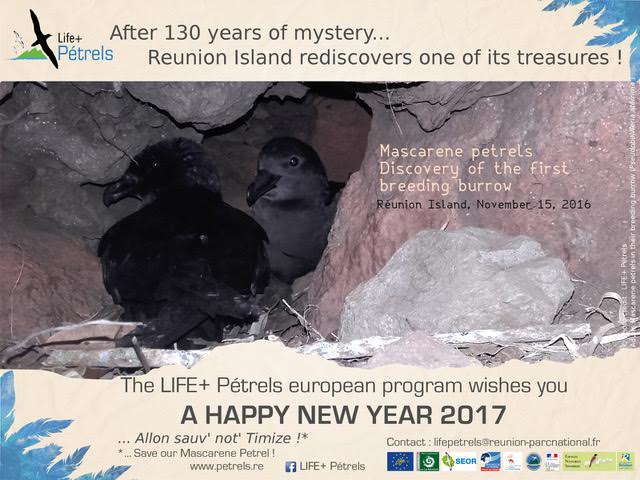The English text of the report of last month’s Sixth Session of the Meeting of Parties (MoP6) to the Agreement held in South Africa is now available (click here). Some of the meeting’s highlights follow.
The Sixth Session of the Meeting of Parties to the Agreement was hosted by South Africa in in the modern and well-equipped Nombolo Mdhluli Conference Centre in the Skukuza Rest Camp, Kruger National Park. Dr Luthando Dziba, Managing Executive: Conservation Services, South African National Parks, formally welcomed delegates to the Sixth Session of the Meeting of Parties on behalf of the Government of South Africa.
In his address Dr Dziba welcomed all the delegates and observers to South Africa and to the Kruger National Park. He noted that South Africa had previously hosted the Fourth Meeting of ACAP’s Advisory Committee, in Somerset West in 2008, but this was the first time it was hosting a session of the Meeting of Parties. He described the importance of South Africa’s sub-Antarctic Marion and Prince Edward Islands for ACAP-listed species, including the globally Vulnerable Wandering Albatross Diomedea exulans and the globally Endangered Indian Yellow-nosed Albatross Thalassarche chlororhynchos. He referred to research conducted on albatrosses and petrels at the Prince Edward Island group, including the at-sea tracking of albatrosses which showed they ranged widely in the Southern Ocean.

Albatross Valley on Prince Edward Island has a high density of breeding Wandering Albatrosses, photograph by Bruce Dyer
Dr Ashley Naidoo, Chief Director in the South African Department of Environmental Affairs’ Branch: Oceans and Coasts was elected to chair the meeting, supported by ACAP’s Executive Secretary, Dr Marco Favero and Dr Nathan Walker, Chair of ACAP’s Advisory Committee. Dr Naidoo in his opening remarks was pleased to note that delegates from all 13 Parties were in attendance at the meeting, along with observers from three albatross and petrel range states (i.e. at least one ACAP-listed species occurs within its waters), Canada, Mexico (for its first ACAP meeting) and the USA. Although not present this time it was noted close links were being kept with Namibia. Observers were also present from several intergovernmental and non-governmental organizations.
A significant development at the meeting was the adoption, following some years of discussions, of a resolution to enable any member economy of the Asia Pacific Economic Co-operation forum whose vessels fish within the range of albatrosses and petrels to participate as an observer by sending representatives to sessions of the Meeting of the Parties and its subsidiary bodies. It is believed this development will allow ACAP to engage with further distant water fishing nations that operate fisheries throughout the ranges of albatrosses and petrels an improvement in mitigating against the threats facing ACAP-listed albatrosses and petrels
During the meeting delegates were told of the United Kingdom’s plan to eradicate introduced House Mice Mus musculus on Gough Island in the South Atlantic, set to take place next year. Notice was also given of South Africa’s intention to rid its sub-Antarctic Marion Island of House Mice in 2020, which, as at Gough, have taken up the habit of attacking and killing albatross chicks (which have no defences to a land-based predator). The eradication of mice from these two important seabird islands will make a significant contribution to the improvement in the conservation status of a number of ACAP priority species and populations. The meeting also heard of recent successes eradicating House Mice on New Zealand’s Antipodes Island and of both rats and mice on South Georgia (Islas Georgias del Sur)*, the largest island where such an eradication has been so far attempted.
Details were given on ACAP’s arrangements with other bodies, especially the tuna Regional Fishery Management Organizations. ACAP intended to work towards signing memoranda of understanding (MoUs) with the South East Atlantic Fisheries Organisation (SEAFO) and the Southern Indian Ocean Fisheries Agreement (SIOFA).
An important part of the meeting’s work was to set the scale of contributions for Parties and a budget for the next triennium, up until the Seventh Session of the Meeting of Parties, expected to be held in 2021 in Hobart, Australia – when ACAP will be 20 years old.
It was noted that ACAP’s Executive Secretary will be leaving the position towards year end and that the position has been advertised and a short list of applicants drawn up, with the intention of making an appointment by the end of August. As this was the last ACAP meeting Marco Favero will attend as Executive Secretary the meeting offered him its grateful thanks and best wishes for the future.
During the meeting delegates went on early-morning, evening and night-time game drives, courtesy of the South African hosts, seeing all the “Big Five” (African Elephant, Cape Buffalo, Leopard, Lion and White Rhino) as well as Giraffes, Spotted Hyenas, Honey Badgers and several species of buck and smaller mammals. Delegates were able to use hand-held spotlights to view animals at night from the open vehicles. One night-time drive was followed by a braaivleis (barbecue), with Kudu meat on the menu, under brilliant stars and candle light in a boma (stockade) outside the confines of the rest camp. On the last evening South Africa hosted delegates to a traditional poikiekos (stew pot) meal in the open air within the camp.
French and Spanish texts of the MoP6 Report will be posted to this website by month end.
John Cooper, ACAP Information Officer, 11 June 2018
*A dispute exists between the Governments of Argentina and the United Kingdom of Great Britain and Northern Ireland concerning sovereignty over the Falkland Islands (Islas Malvinas), South Georgia and the South Sandwich Islands (Islas Georgias del Sur y Islas Sandwich del Sur) and the surrounding maritime areas.

 English
English  Français
Français  Español
Español 



